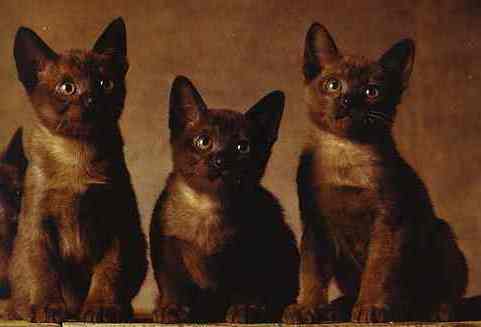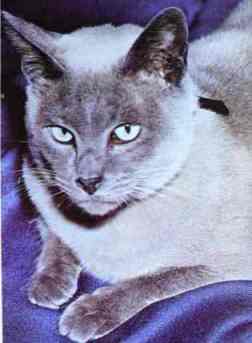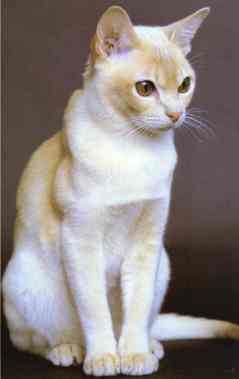 Burmese is a short-haired breed named after the country of origin of the founder cat. In reality, its ancestors may have been found over a wider range of the Far East, including Thailand. The first records about this cat appear in Siam in 1350.The beautiful brown, golden-eyed cats were kept as sacred animals in the temples, monasteries and palaces of Burma. In 1930s a female cat was brought to the USA, which started the modern Burmese breed. Burmese is muscular, athletic, compact, short-haired cat with a glossy, rich, dark brown coat. The underpants are slightly lighter in color than the rest of the body, but the change from light areas to dark is gradual. The rounded, domed head, with ears set wide apart, has a short face with golden-yellow eyes. Burmese is said to be affectionate, alert, active, agile, sociable, inquisitive, athletic, ingenious, intelligent, curious, zestful, adaptable, lively, energetic, smart, playful, devoted, vocal, highly strung, rumbustious, boisterous, bold, bossy, stubborn and demanding. In general, its character is felt to be close to that of the Siamese. Color forms: In some countries many different color forms are recognized, in others, only a few colors forms are accepted, the others being given different breed names, such as Malayan. The traditional color for this breed is brown, other colors were added later. GCCF: brown, blue, chocolate, lilac, red, cream, brown tortie, blue tortie, chocolate tortie, lilac tortie. CFA: Sable (=brown), champaign (=chocolate); blue, platinum (=lilac) Further reading for Burmese lovers: Burmese Cat (Popular Cat Library) by Justine O'Flynn. Guide to Owing a Burmese Cat by Justine O'Flynn. The Burmese Cat by Robine Pocock. Burmese Cats : Everything About Acquisition, Care, Nutrition, Behavior, Health Care, and Breeding (Complete Pet Owner's Manual) by Carolyn Vella, John, Jr. McGonagle (Contributor)
|

